| As example an image of mars (January 2010) has been used: Image made with Zeiss B Optics 180/3310 and Imaging Source31AF03 CCD. The images simulate the effect of atmospheric dispersion for different zenith distances. On the right column the corresponding spot diagrams with the strehl values are displayed. |
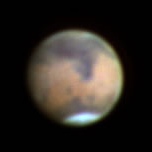 |
With optimal correction
of atmospheric dispersion. |
||
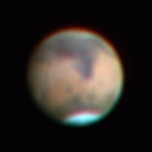 |
30° zenith distance | 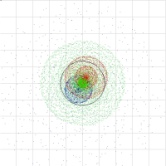 |
Strehl 0,90 |
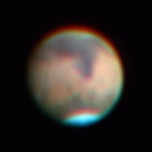 |
45° zenith distance | 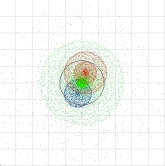 |
Strehl 0,80 |
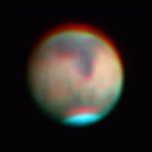 |
60° zenith distance | 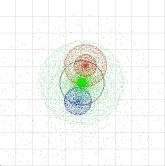 |
Strehl 0,66 |
The atmospheric dispersion shifts the images of the different colors. This results not only in a chromatic bleeding but also in a worse point spread function reducing the strehl value. This loss of contrast is about a factor 3 for objects with 30° above horizon (60° zenith distance) observed with a 20cm refractor !
The diagrams below show the contrast function for vertical structures observed with a 20cm refractor and a binocular viewer (f=3360mm). Structures of 1” size are corresponding to special frequency of 56 line pairs /mm. The diagrams prove a contrast improvement of a factor 3 when using the ADC system.
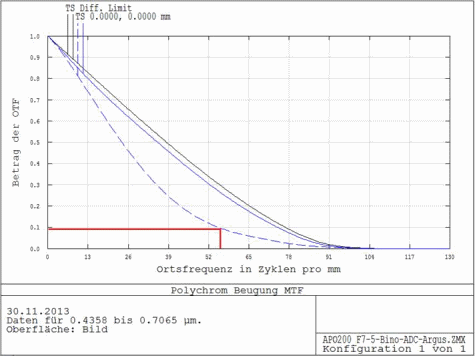 |
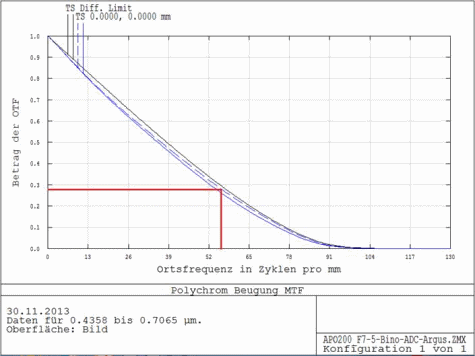 |
The contrast improvement by using an ADC system is also given for observing objects with small zenith distances.
For this reason the ADC should be especially used for high performance observation of objects which have even small zenith distances (30°and less or 60° or more above horizon).
The diffraction limited performance is defined by Huygens with a Strehl value of 0.8. But experience shows that a telescope with a Strehl value > 0.9 has well distinguished performance advantages.
Atmopsheric dispersion reduces the Strehl value of an optimal telescope below 90% for following zenith distances:
for 60cm aperture and zenith distances greater than 13°
for 30cm aperture and zenith distances greater than 20°
for 20cm aperture and zenith distances greater than 30°